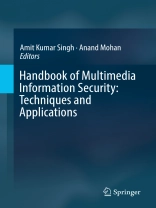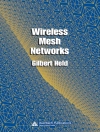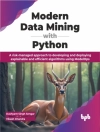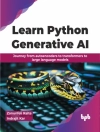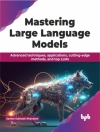This handbook is organized under three major parts. The first part of this handbook deals with multimedia security for emerging applications. The chapters include basic concepts of multimedia tools and applications, biological and behavioral biometrics, effective multimedia encryption and secure watermarking techniques for emerging applications, an adaptive face identification approach for android mobile devices, and multimedia using chaotic and perceptual hashing function.
The second part of this handbook focuses on multimedia processing for various potential applications. The chapter includes a detail survey of image processing based automated glaucoma detection techniques and role of de-noising, recent study of dictionary learning based image reconstruction techniques for analyzing the big medical data, brief introduction of quantum image processing and it applications, a segmentation-less efficient Alzheimer detection approach, object recognition, image enhancements and de-noising techniques for emerging applications, improved performance of image compression approach, and automated detection of eye related diseases using digital image processing.
The third part of this handbook introduces multimedia applications. The chapter includes the extensive survey on the role of multimedia in medicine and multimedia forensics classification, a finger based authentication system for e-health security, analysis of recently developed deep learning techniques for emotion and activity recognition. Further, the book introduce a case study on change of ECG according to time for user identification, role of multimedia in big data, cloud computing, the Internet of things (Io T) and blockchain environment in detail for real life applications.
This handbook targets researchers, policy makers, programmers and industry professionals in creating new knowledge for developing efficient techniques/framework for multimedia applications. Advanced levelstudents studying computer science, specifically security and multimedia will find this book useful as a reference.
विषयसूची
Preface.- Froward.- Table of Contents.- Part 1 Multimedia Security.- 1. Information to Multimedia Tools and Applications.- 2. An overview of Biometrics Methods.- 3. SIE: An application to secure Stereo Images using Encryption.- 4. Example based Privacy-Preserving Video Color Grading.- 5. A novel Watermarking Technique for Multimedia Security.- 6. A Secure Medical Image Watermarking Technique for E-Healthcare Applications.- 7. Hybrid Transforms based Oblivious Fragile Watermarking Techniques.- 8. Performance Analysis of Invariant Quaternion Moments in Color Image Watermarking.- 9. Security Biometric and Biomedical Images using Sparse Domain based Watermarking Technique.- 10. Performance Analysis of Image Encryption Methods using Chaotic, Multiple Chaotic and Hyper-Chaotic Maps.- 11. Perceptual Hash function for images based on Hierarchical Ordinal Pattern.- 12. Hash Function based Optimal Blockchain Model for the Internet of Things.- 13. An Adaptive and Viable Face Identification for Android Mobile Devices.- 14. Realization of Chaos-Based Private Multiprocessor Network via USART of Embedded Devices.- 15. Robust and Secure Hiding Scheme for Open Channel Transmission of Digital Images.- Part II Multimedia Processing.- 1. Image Processing based Automated Glaucoma Detection Techniques and Role of De-noising: A Technical Survey.- 2. A Study on Dictionary Learning based Image Reconstruction Techniques for Big Medical Data.- 3. Quantum Image Processing and its Applications.- 4. 3-D Shape Reconstruction Based CT Image Enhancement.- 5. A segmentation-less Efficient Alzheimer Detection Approach using Hybrid Image Features.- 6. On Video based Human Abnormal Activity Detection with Histogram of Oriented Gradients.- 7. Enhancement and De-noising of OCT Image by Adaptive Wavelet Thresholding Method.- 8. Quantization Table Selection using Firefly with Teaching and Learning based Optimization Algorithm for Image Compression.- 9. Wavelet Packet Based CT Image De-noising Using Bilateral Method and Bayes Shrinkage Rule.- 10. Automated Detection of Eye Related Diseases using Digital Image Processing.- 11. Detector and descriptor based Recognition and Counting of Objects in Real Time Environments.- Part III Multimedia Applications.- 1. Role of Multimedia in Medicine: Study of Visual Prosthesis.- 2. Finger Biometrics for e-Health Security.- 3. ECG Security Challenges: Case Study on Change of ECG According to Time for User Identification.- 4. An Efficient Lung Image Classification using GDA based Feature Reduction and Tree Classifier.- 5. Analysis of Streaming Data using Big Data and Hybrid Machine Learning Approach.- 6. Deep Neural Networks for Human Behavior Understanding.- 7. Digital Image Forensics-Gateway to Authenticity: Crafted with Observations, Trends and Forecasts.- 8. Resources Allocation in Co-operative Relay Networks for IOT Driven Broadband Multimedia Processing.- 10. Internet of Things for Healthcare: System Architecture, Predictive Analysis and Potential Challenges.- 11. Internet of Things with Blockchain Technology: State-of-the-art and Potential Challenges.
लेखक के बारे में
Amit Kumar Singh received the bachelor’s degree in computer science and engineering from the Institute of Engineering, VBS Purvanchal University, Jaunpur, India, in 2005, the M.Tech. degree in computer science and engineering from the Jaypee University of Information Technology, Waknaghat, India, in 2010, and the Ph.D. degree in computer engineering from the National Institute of Technology, Kurukshetra, India, in 2015. He was with the Computer Science and Engineering Department, Jaypee University of Information Technology, from 2008 to 2018. He is currently an Assistant Professor with the Computer Science and Engineering Department, National Institute of Technology at Patna (An Institute of National Importance), Patna, India. He has authored over 70 peer-reviewed journals, conference publications, and book chapters. He has authored two books entitled Medical Image Watermarking: Techniques and Applications, in 2017, and Animal Biometrics: Techniques and Applications, in 2018 (Springer International Publishing). He has also edited the book Security in Smart Cities: Models, Applications, and Challenges (Springer International Publishing, 2019), the Proceedings of 4th IEEE International Conference on Parallel, Distributed and Grid Computing in 2016 and the Proceedings of 4th International Conference on Image Information Processing in 2017. He currently serves on the Editorial Board of two peer-reviewed international journals, including the IEEE ACCESS and Multimedia Tools and Applications (Springer). He has edited various international journal special issues as a Guest Editor, such as IEEE Consumer Electronics Magazine, IEEE Access, Multimedia Tools and Applications, Springer, International Journal of Information Management, Elsevier, Journal of Ambient Intelligence and Humanized Computing, Springer, Multimedia Systems, Springer, Int. J. of Information and Computer Security, Inder Science, International Journal of Grid and Utility Computing, Inderscience and Journal of Intelligent Systems, Walter de Gruyter Gmb H & Co. KG, Germany . His research interests include data hiding, biometrics, & Cryptography.
Anand Mohan has nearly 42 years rich experience of teaching, research, administration and managing higher educational institutions. He began his career in December 1975 as R & D Engineer of Murphy India Ltd., Thane, Maharastra and subsequently joined as faculty in April 1979 at Electronics Engineering, Institute of Technology-now IIT (BHU), where he is currently working as Institute Professor. Prof. Mohan has provided national level leadership to the defense related R & D activities as Chairman, Armament Sensors & Electronics (ASE) Panel under ARMREB, DRDO, Ministry of Defense, Govt. of India. As part of a doctoral research, he has developed a potential technology for application in ‘Neutron Detection Reader’ system for defense applications. Prof. Mohan has active research collaboration with Louisiana State University, USA, Curtin University, Malaysia, Kathmandu University, Nepal and Central Electronics Engineering Research Laboratory (CEERI), Pilani, Rajsthan. Prof. Mohan has made notable academic and research contributions in the field of Electronics Engineering at IIT (BHU) by creating a dedicated research group of eminent academicians and researchers from the country and abroad. He has established state-of-the-art research facilities and conducted high quality research in the areas of fault tolerant / survivable system design, steganography, and embedded system design. His current areas of research interest are intelligent instrumentation, fault tolerant design, robust watermarking algorithms, and information security. He has authored 145 research papers published in reputed international / national journals and conference proceedings. He has supervised 11 Ph. D. theses and made four chapter contributions in books. His Co-authored book ‘Medical Image Watermarking: Techniques and Applications’ has been published by Springer. Academic and research contributions of Prof. Mohan are internationally / nationally acknowledged.
